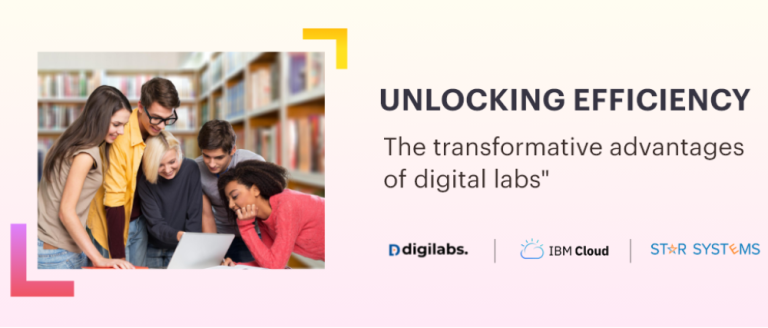Many schools and universities are adopting lab-based learning to make lessons more practical and engaging. These labs help students connect theory with situations, giving them skills that stay useful long after exams are over.
What is Hands-On Training Lab?
A hands-on training lab is a practical learning space where participants engage in hands-on learning by performing real or simulated tasks. Rather than just learning theory, students learn skills using actual tools, software, or equipment to gain hands-on experience and build confidence.
Hands-on lab gives students a space to experiment safely, learn from mistakes, and understand how theory works.
Hands-On Training Labs vs Traditional Classrooms
Traditional classrooms usually focus on lectures and written work. While this approach helps students gain foundational knowledge, it often leaves them unsure about how to apply what they have learned. Hands-on training labs take a different approach by turning learning into an active, practical experience.
Here’s why hands-on labs are more effective:
1. Instant Feedback – Labs allow students to see and correct mistakes immediately. This helps them understand what went wrong and learn from their errors.
2. Deeper Understanding – Practical work connects lessons to examples. Students can see the purpose behind what they study, making concepts easier to grasp.
3. Higher Engagement – Hands-on labs keep students interested and motivated. Instead of passively listening, they are actively solving problems and experimenting.
4. Better Retention – Learning by doing ensures that students retain information longer. Experiences leave a stronger impression than theory alone.
New Learning Mindset of Students in 2025
Students today grow up surrounded by technology. They expect learning to be fast, interactive, and relevant. By 2025, students will need more than academic knowledge.
Here are the skills modern students must develop and how hands-on labs support them:
Critical Thinking: Hands-on labs make students think for themselves, assess problems, and devise successful solutions.
Digital Literacy: Virtual and cloud-based labs teach students to use technology responsibly and effectively.
Collaboration: Many labs involve teamwork, where students plan, divide tasks, and share results.
Adaptability: In lab settings, things don’t always go as planned. Learning to adapt builds confidence and problem-solving ability.
Benefits of Hands-On Training Labs
Hands-on training labs offer more than just practical experience. They reshape how students learn, think, and perform. Below are the key benefits schools and universities notice when adopting lab-based learning.
Stronger Knowledge Retention
Students remember more when they engage with materials directly. Research shows that practical learning increases retention by over 60% compared to traditional lecture-based instruction. When students handle experiments or projects, knowledge moves from short-term memory into long-term understanding.
Improved Confidence
Students remember more when they engage with materials directly. Research shows that practical learning increases retention by over 60% compared to traditional lecture-based instruction. When students handle experiments or projects, knowledge moves from short-term memory into long-term understanding.
Stronger Knowledge Retention
Students who practice skills repeatedly gain confidence. They know what to expect, how to troubleshoot, and how to succeed. This confidence carries into exams, projects, and even their first job after graduation.
Faster Learning Curves
In labs, students move from theory to action instantly. That reduces the gap between understanding and doing. By learning through immediate application, students master topics faster and with less need for revision.
Practical Readiness
Hands-on labs mirror real situations. Whether it’s configuring a server, analyzing patient data, or testing a bridge design, students experience the conditions they’ll face later in life. This makes them job-ready before they graduate.
Better Student Engagement
Practical sessions are naturally more interesting. Students become active participants in their learning process. Instead of watching, they’re creating and experimenting. This keeps attention levels high and dropout rates lower.
Equal Learning Opportunities
Virtual labs remove barriers for students who may not have access to physical facilities. Everyone can participate, regardless of location or resources. Schools can extend lab-based learning beyond campus walls, giving all students equal access to practice.
Time Assessment
Teachers can measure student performance accurately in labs. Data on progress, mistakes, and improvements provides clear insight into each learner’s strengths. This makes feedback faster and more personalized.
How Schools and Universities Can Use Hands-On Labs
Educational institutions can apply hands-on training in almost every subject area. Here’s how it can look:
STEM Fields: Engineering, physics, and computer science can use simulation tools and virtual setups for design and coding.
Medical and Nursing Education: Students can use medical simulations to practice diagnosis and patient care safely
Business and Economics: Interactive data labs help students analyze markets and make decisions based on live data.
Environmental Studies: Virtual experiments allow students to test climate models and sustainability strategies.
Humanities: Digital storytelling, virtual museums, and language labs bring creativity and interactivity to learning.
How DigiLabs Provides Hands-On Training
Digilabs offers step-by-step guided labs, role-based practice exercises, and real-time feedback. Learners can explore, make mistakes, and learn by doing without worrying about damaging real systems. Teachers and trainers can track progress, assign labs, and measure learning outcomes easily.
In addition to making lab facilities available, Digilabs designs a real hands-on learning experience. With realistic simulators and current scenarios, students can practice skills that mirror actual workplace issues.




